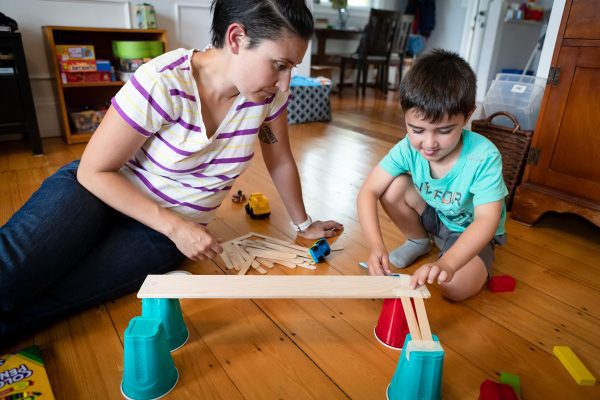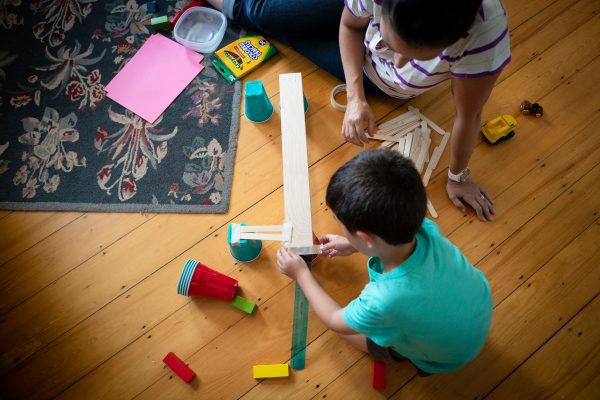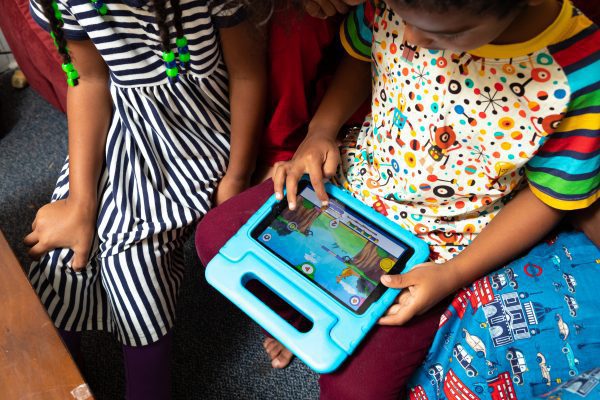Citation
Christensen, C., Nelson, L., & Silander, M. (2020). Digital media can help preschoolers learn real-world science skills. The joan ganz cooney center at sesame workshop.
Abstract
Young children spend about two hours each day using screen-based media, about half of which is spent on educational media, according to their parents. Many studies report that children can learn a range of skills from well-designed educational media. Yet we know relatively little about whether and how well children are able to apply skills they’ve learned from digital media in the real world. This question is particularly important for subjects that involve learning about the physical world, like science. There is a small amount of evidence that children can learn science from media. At the same time, digital media differ from the real world in ways that may be challenging for children to reconcile: digital science media are two-dimensional, are often cartoon-like or anthropomorphized, and frequently focus on refuting misconceptions rather than teaching science facts. Yet there may be ways to design science media to support children in connecting their learning to the real world. A recent study conducted by Education Development Center (EDC) and SRI Education found that four- to five-year-old children can apply science skills that they learned from digital media in the real world. The study was commissioned by the U.S. Department of Education’s Ready To Learn initiative, led by the Corporation for Public Broadcasting and PBS.

In this randomized-control trial, researchers assigned 454 four- and five-year olds from low-income households to either a treatment or control group. Both groups received tablet computers with internet access. The treatment group’s tablets were loaded with resources from the third season of The Cat in the Hat Knows A Lot About That! including videos, games, and hands-on/real world activities. Researchers asked the control group to use other educational media of their own choosing. Researchers asked families in both groups to have their children use the resources for one hour per week over eight weeks.
At the beginning and the end of the study, researchers assessed the children’s science and engineering knowledge and practices using several measures, including hands-on performance-based tasks to assess their understanding in three areas:
- structural stability,
- forces and friction, and
- how objects can be sorted based on material properties and uses.
The structural stability task provided children with a group of objects of different strengths and lengths, and asked them to choose the most suitable object for building a bridge that can support weight. The forces and friction task provided children with three differently textured slides and asked them to choose the slide that would enable a toy figure to slide down fastest. The sorting task asked children to sort items based on material properties such as color, size, shape, and use.

Researchers found that access to Cat in the Hat resources had medium to large impacts on children’s understanding of the role of strength and length in structural stability and the influence of friction on movement down an incline. This finding suggests that young children’s experiences with manipulating objects in digital games and watching characters manipulate objects in digital videos can, in fact, transfer to off-screen contexts. Meanwhile, the study found no significant effect on the sorting task, which suggests that some skills may be more difficult for preschoolers to transfer from digital to hands-on contexts.
What helped preschoolers transfer their learning from digital videos and games to two of the hands-on tasks used in this study? The study did not attempt to disentangle which aspects of the resources were most effective, but we speculate a few reasons based on prior research.
First, the Cat in the Hat resources used in this study—videos, games, and hands-on activities—were intentionally developed to support young children’s understanding of physical science and engineering. The resources are aligned with the K-12 Next Generation Science Standards and the Head Start Early Learning Outcomes Framework. They focus on physical science and engineering concepts, which lend themselves to visual depiction. Each resource focuses on one or two focal concepts. Characters model the associated practices and vocabulary realistically, even though they are often in fanciful contexts. This focused, deliberate approach may support children’s deeper learning.
In addition, children found the Cat in the Hat materials to be engaging and fun, evidenced by the fact that over half of the children in the treatment group (59%) engaged with the Cat in the Hat games and videos for more than 20 hours over the eight week study. Parents also reported that treatment children watched the Cat in the Hat videos on other platforms, such as Netflix and YouTube, and a few parents said their children mimicked the activities they saw in the media with their toys. Children who are more engaged may learn more: researchers found some evidence that the more time children watched the “Bridge-a-rama” videos and played the “Slidea-ma-zoo” games, the more they outperformed our predictions on the related assessments, although this relationship was not linear and weakened at very high levels of use. Why did families find the materials engaging? It could be the show’s entertaining narratives. Studies show that children are more likely to retain educational concepts if the digital media follow a plot or a narrative and are therefore able to keep them engaged. The Cat in the Hat himself may also have engaged children—children tend to learn more from characters they know and like.

Further, children may have benefitted from the inclusion of both videos and digital games in this study as both have strengths for supporting learning. Studies have found that young children can transfer skills from game-like digital activities to the real world. Videos may be even more effective than games for supporting transfer of hard-to-learn skills, perhaps because playing games demands more working memory capacity. Games may be more effective for helping preschoolers transfer their learning to similar tasks, whereas videos may be more effective for helping preschoolers transfer their learning to different tasks. The mix of both videos and games in this study may have exposed children to the same ideas in multiple ways, supporting their ability to think flexibly about science content.
This study suggests that children may be able to apply skills learned from high-quality digital STEM media in off-screen, hands-on situations. Based on prior research, we speculate that media can help children connect digital to real-world learning by providing focused educational content in the context of engaging narratives that span digital videos and games.


